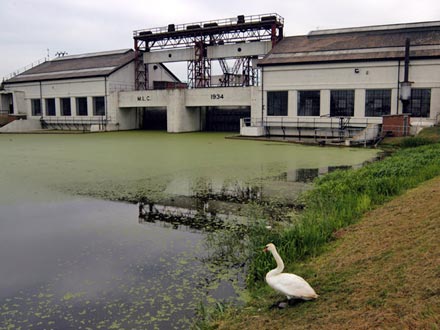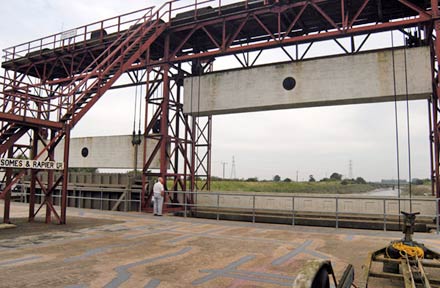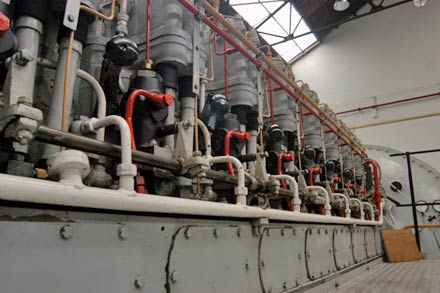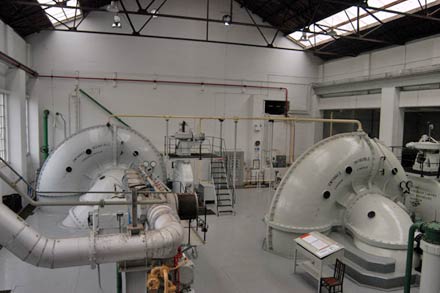Journalist and predator angler Chris Bishop fell in love with the Fens when he moved to Norfolk a few years ago. In a regular series, exclusive to FISHINGmagic, he gives us a glimpse of this unique landscape and some of the characters who fish it.
PLANS FOR A NEW PUMPING STATION ARE UNVEILED Awesome in scale, the massive pumps tower above you in the pair of cathedral-sized pump houses which flank the tail sluice. But while the huge machines are called Gwynnes Invincible, officials fear they’ll soon be far from that. Even though they can each shift more than 1000 tonnes of water a minute, and pump it uphill against the tide, they are fighting a losing battle against rising sea levels and our changing climate.
St Germans Pumping Station, on the Middle Level Drain near King’s Lynn, protects more than 170,000 acres of low-lying Fenland, much of it below sea level. Without those giant pumps and the sluices which keep the tide at bay, thousands of homes and businesses would be at risk of flooding. The Middle Level Commissioners, who control drainage and water levels across the Fens, say the station is deteriorating.
Its 70-year-old pumps are becoming increasingly prone to breakdowns. The highest tides lap against the top of its sluice gates and sometimes leave cracks in its retaining walls. David Phillips, the Middle Level’s chief engineer, said: “It never ceases to amaze me every time I come down here, but it’s 70 years old and it isn’t going to carry on ad infinitum. “Pumps break down and there are serious shortcomings in the reliability of the equipment.” The scale of all this is frightening if your sole experience of pumping is when a still drain starts moving setting off all three bite alarms at once, as the water shudders and begins to rush seawards.
The Middle Level, dug in the 1840s, was the final link in the 300km chain of artificial waterways designed by the great drainers to reclaim the Fens for farming. But as the land dried out. The peat shrank leaving river levels much higher than the surrounding farmland and large tracts of Fenland several metres below sea level. A further danger comes from rivers further inland like the vulnerable Old Nene, whose banks could burst if water levels get too high.
At present, the pumping station and sluice, built in 1934, should only be overwhelmed by a one in every 100 year flood event. But a consultants’ report warns the pumps will break down more and more frequently, for longer periods of time, as spare parts become increasingly hard to locate. If all four failed at once during sustained heavy rain across the Fens and further inland, the devastation would be the stuff of a disaster movie.
The sheer scale of the forces involved and the powers needed to drive water uphill off the land against the land, against the laws of gravity and nature are almost too awesome to contemplate. If nothing is done and the pumping station is allowed to fall into disrepair, a report warns: “With no means of draining the catchment, the majority of the catchment would be written off in a relatively short space of time, with the land reverting to fen and marshland.” Plans for a new pumping station a few hundred yards downstream of the current one were unveiled to councillors and drainage board officials yesterday.
It will have six pumps, instead of the current four – meaning the drains in the Middle Level system can be run off even harder than at present, when fishing often becomes next to impossible when the pumps at St Germans are running full-tilt. Commissioners are still waiting to hear whether the Government will approve the £ 40m they need to build it. A decision is due shortly. Building a structure of that size, in a tidal river where water levels can rise and fall by up to 20ft within a few hours, is a major engineering feat. It will require a massive coffer dam to keep the base of the structure dry, like the one used to replace the sluice in the Delph at Salter’s Lode five years ago. |




















